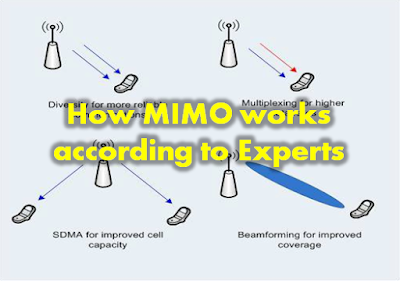Question _ to talk to engineers who worked in mimo in terms of coverage and distance. and since it falls within the fourth generation, sure suffers from these things I mentioned.
The question is, did the mimo handle this thing?
I studied it as a graduation project, but it was dedicated to the correction, not the cover and the distance.
If he has an idea, please explain
Some clarifications.
I haven't worked in mimo, but in my experience in RF, the coverage and distance depend on the amount of power, but I think mimo improves the speed of the data sent and the receiving, which is as good as the correction algorithms and therefore the quality of the receiving signal. And the sender is better with less mistakes.
There is a frequency and there is a bandwidth
Several frequencies can combine together to give you more bandwidth, and so more data rate
For example in CDMA one frequency is 1.25MHz, and this can be used as one TRAX for EVDO service, which is data service
And in Rev B, you can add even three TRXs to serve one user with 3 times speed
Logic says,
High Frequency, Power High, data, High inert, Low coverage distance, many users
A little hesitation, little power, data, Low inert, a large cover distance. a few users.
A high frequency and a little hesitation will affect the ensure.
We want a semi-perfect solution.
High Frequency. Power High, data, Low inert, Large cover distance, many users.
Example
There's a CDMA System using frequency in 800 Mhz.
And There's a CDMA System using the 1900 MHZ CLAUSE.

The two systems use the negative 1.25 Mhz but the frequencies falling within the 1900 (which are high frequencies) are far less covered than the 800 Mhz range, while the systems have the same Data Speed.
Did you get the idea?
And it's the same idea in GSM. There's a range of 800 Mhz and there's a range of 1900 as I remember.
In The LTE they use the 5 Mhz, the 10 Mhz and the 20 Mhz and all of them can be in the same range, but the more the unexpected, the higher the data.
Excuse me but i comment on that sentence
Maybe we'll recast it.
The more I need data, the more I need to reserve more frequencies and not higher.
Capacity, connectivity and latency are three important factors to differentiate between 4G and 5G
Note:
In addition to what colleagues said,
Main goal of MIMO
It's increased data transmission, but we can use it to improve the sinr.
How??
For example, if it was a long distance from the ạlsạyt, the signal would be connected with a weak with, that means a little value for the sinr, and therefore take a few data
With the weak MIMO technique, it's all is, so we gather the signals from each antenna, which leads to improved SINR and therefore data is better.
And so the user of a distance from the ạlsạyt will have a better start with mimo technology.
Besides, it's with a system.
LTE - Advanced
The Relay have been used.
To improve the cover on the parties.
The idea of relays in short is a little similar to the repeater but it works at a higher level than the repeater
Meaning what a higher level than the repeater
Meaning
Besides, she's doing his job. She's doing a job.
Modulation & demodulation
coding & decoding
Cipherng & de-ciphering
Definition of technology in the picture
Multiple-Input Multiple-Output (MIMO) transmission
MIMO techniques enhance system performance, service capabilities, or both. At its highest level, LTE multi-antenna transmission can be divided into transmit diversity and spatial multiplexing.
The former can can be seen as a technique for averaging the signals received from the two antennas, thereby avoiding the deep fading dips that occur per antenna.
The latter employs multiple antennas at the transmitter and receiver side to provide simultaneous transmission of multiple parallel data streams over a single radio link, therefore increasing significantly the peak data rates over the radio link. Additionally, LTE supports SDMA (Spatial Division Multiple Access) and beamforming.
I want to know exactly what the MIMO did for the distance and the cover.
See the engineers who worked in mimo, but as far as I know it is just to improve speed and not cover.. we can all benefit from the experience of colleagues














I truly appreciate the clarity and simplicity in this, very helpful. Read this profile for more information Coreball Game. Coreball is loved because of its easy rules and engaging design.
ReplyDelete